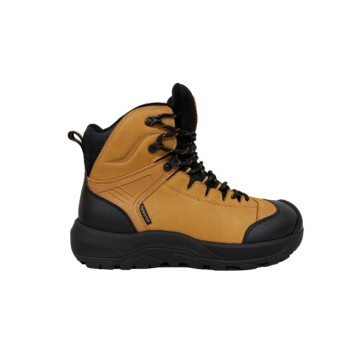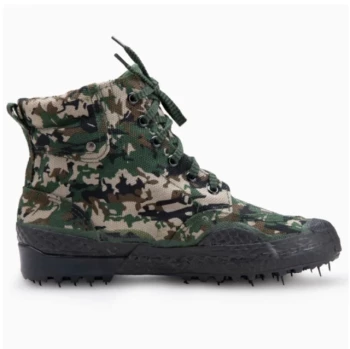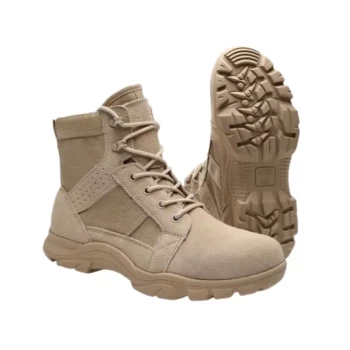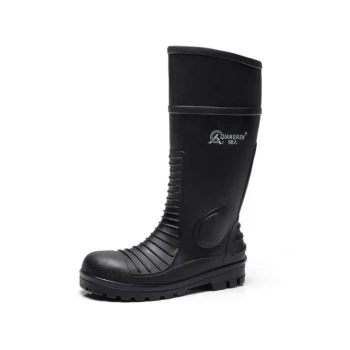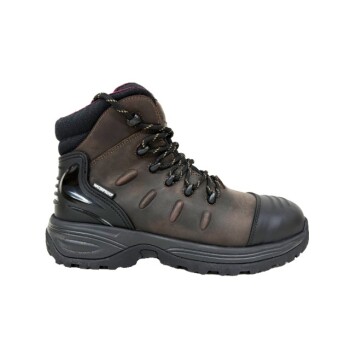The primary benefits of winter hiking boots are warmth, waterproofing, and superior traction. This specialized footwear is engineered to keep your feet warm and dry in cold, wet conditions while providing a secure grip on snow and ice, significantly reducing the risk of slips, injuries, and cold-related issues like frostbite.
A winter hiking boot is not merely a piece of footwear; it is a critical safety system. Its true value lies in preventing dangerous falls and serious cold-induced foot conditions, which standard hiking boots are not equipped to handle.
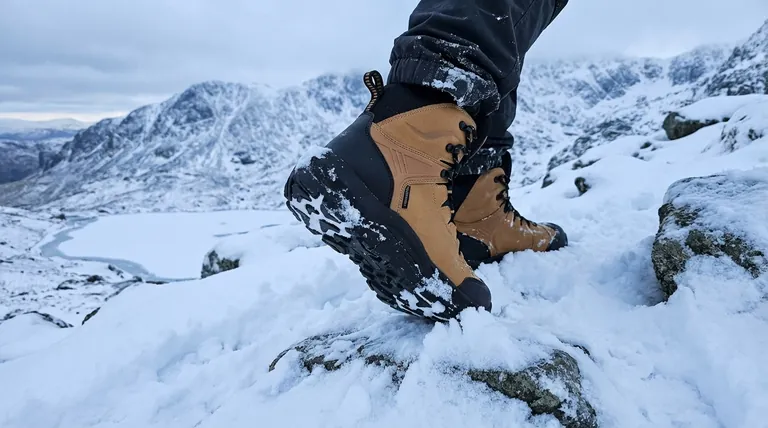
The Core Functions of a Winter Hiking Boot
To understand the benefits, we must first look at the specific problems a winter boot is designed to solve. Each feature addresses a distinct challenge posed by cold, snowy, and icy environments.
Critical Warmth Through Insulation
The most defining feature of a winter hiking boot is insulation. Unlike standard boots, these contain lightweight material designed to trap your body heat and keep your feet warm even in sub-zero temperatures.
This is essential for both comfort and safety, as prolonged exposure to cold can lead to serious physical issues.
Uncompromising Waterproofing
Keeping feet dry is paramount to keeping them warm. Winter boots feature waterproof protection to create an impenetrable barrier against external moisture from snow, slush, and ice.
This prevents conditions like trench foot and blisters, which are exacerbated by wet and cold environments.
Superior Traction on Treacherous Surfaces
Winter boots are built with aggressive, thick outsoles made from rubber compounds that stay flexible in the cold. The deep lugs are specifically designed to bite into snow and grip icy surfaces.
This specialized traction is a key safety feature, providing the stability needed to prevent dangerous slips and falls on unpredictable winter trails.
Enhanced Support and Protection
Winter terrain is often uneven and hidden beneath a layer of snow. Winter hiking boots provide robust ankle support to prevent twists and sprains.
They also feature a reinforced toe cap for protection against impacts with hidden rocks or ice.
Understanding the Trade-offs
While the benefits are clear, it's important to recognize that this level of protection comes with necessary compromises. Understanding these trade-offs is key to choosing the right footwear.
The Cost of Protection: Weight
The added insulation, thicker soles, and durable materials make winter hiking boots heavier than their three-season counterparts.
This additional weight requires more energy to lift with each step, which can contribute to fatigue on very long hikes. The trade-off is clear: you are exchanging lower weight for higher levels of safety and warmth.
Reduced Flexibility and Agility
The rigid construction required for robust support means winter boots are inherently less flexible.
For casual family activities or less rugged trails, some users may prefer a lighter, more agile boot that combines sneaker-like comfort with basic winter protection.
Making the Right Choice for Your Goal
The right boot depends entirely on the environment and the intensity of your activity. Your decision should be guided by the specific challenges you expect to face.
- If your primary focus is on casual, well-maintained trails: A hybrid waterproof boot with light insulation may offer the best balance of agility and protection.
- If your primary focus is on rugged, icy, or deep-snow terrain: A dedicated winter hiking boot with significant insulation, aggressive outsoles, and full ankle support is non-negotiable for safety.
- If your primary focus is on snowshoeing or mountaineering: Look for boots with specific features like gaiter clips and a stiffer sole designed for compatibility with other winter gear.
Investing in the correct footwear is the first step toward a safe and comfortable winter adventure.
Summary Table:
| Benefit | Key Feature | Primary Advantage |
|---|---|---|
| Warmth | Advanced Insulation | Prevents frostbite, keeps feet warm in sub-zero temperatures |
| Waterproofing | Sealed Membranes | Blocks moisture from snow and slush, preventing blisters |
| Traction | Aggressive Outsoles | Grips snow and ice, reduces risk of slips and falls |
| Support | Ankle Support & Toe Cap | Protects against twists and impacts on uneven terrain |
Ready to equip your customers with reliable winter footwear?
As a large-scale manufacturer, 3515 produces a comprehensive range of high-performance winter hiking boots for distributors, brand owners, and bulk clients. Our production capabilities ensure durable, insulated, and waterproof boots designed for safety and comfort in the harshest conditions.
Partner with us to offer your customers the best in winter footwear. Contact our team today to discuss your specific needs and receive a customized quote.
Visual Guide
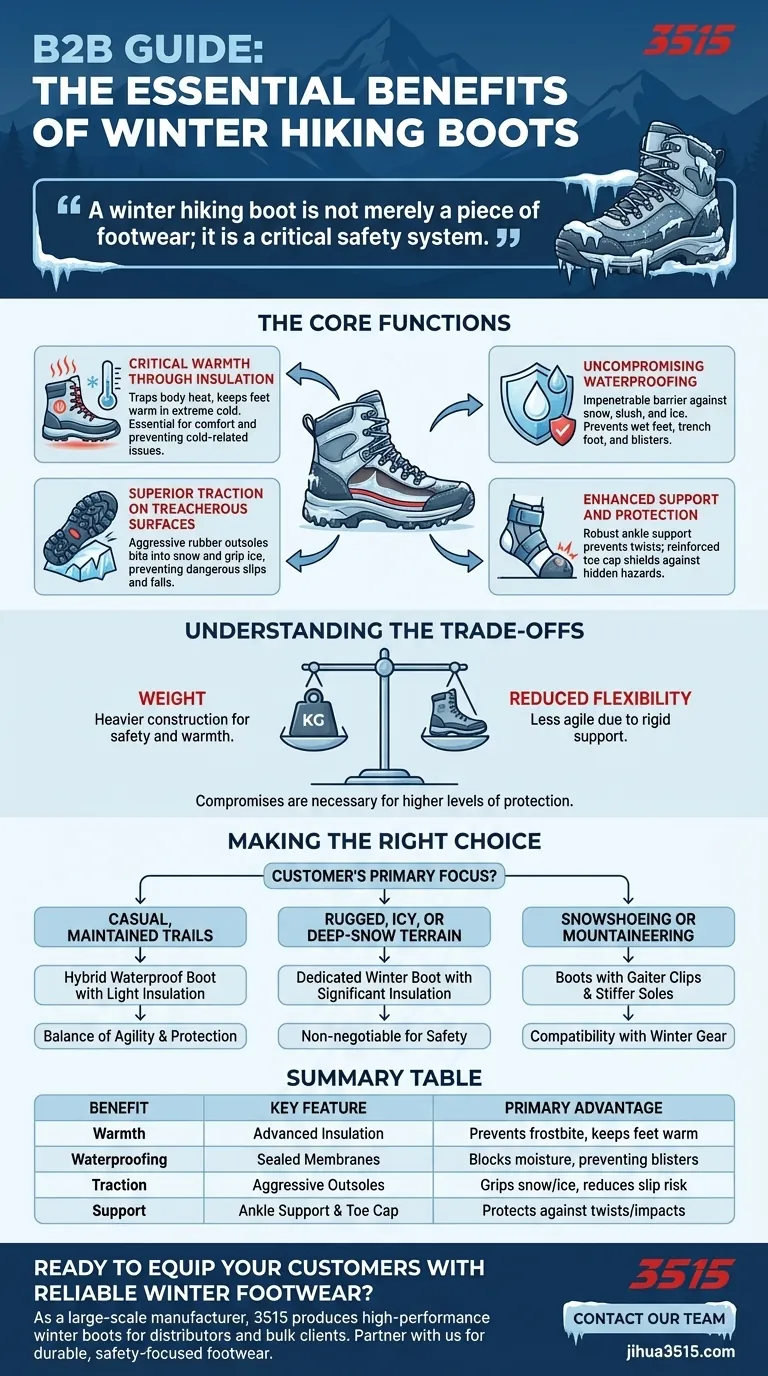
Related Products
- Premium Insulated Safety Boots and Shoes for Wholesale & Bulk Orders
- High Performance Fire-Retardant Waterproof Safety Boots
- Safety Footwear Wholesale Manufacturer for Custom OEM/ODM Production
- Factory-Direct Wholesale Canvas Boots with High-Traction Rubber Soles
- Premium Flame-Retardant Waterproof Safety Boots and Shoes
People Also Ask
- Can insulated work boots be worn in warmer weather? Avoid Discomfort and Foot Health Risks
- What features should one look for when selecting supportive winter footwear? Secure Your Stride with the Right Support
- Why is it important to keep feet dry during winter? Prevent Frostbite & Infections
- What is the best way to protect feet from frostbite in winter? A Complete System for Dry, Warm Feet
- What should be considered when choosing winter work boots? Key Factors for Safety & Warmth
